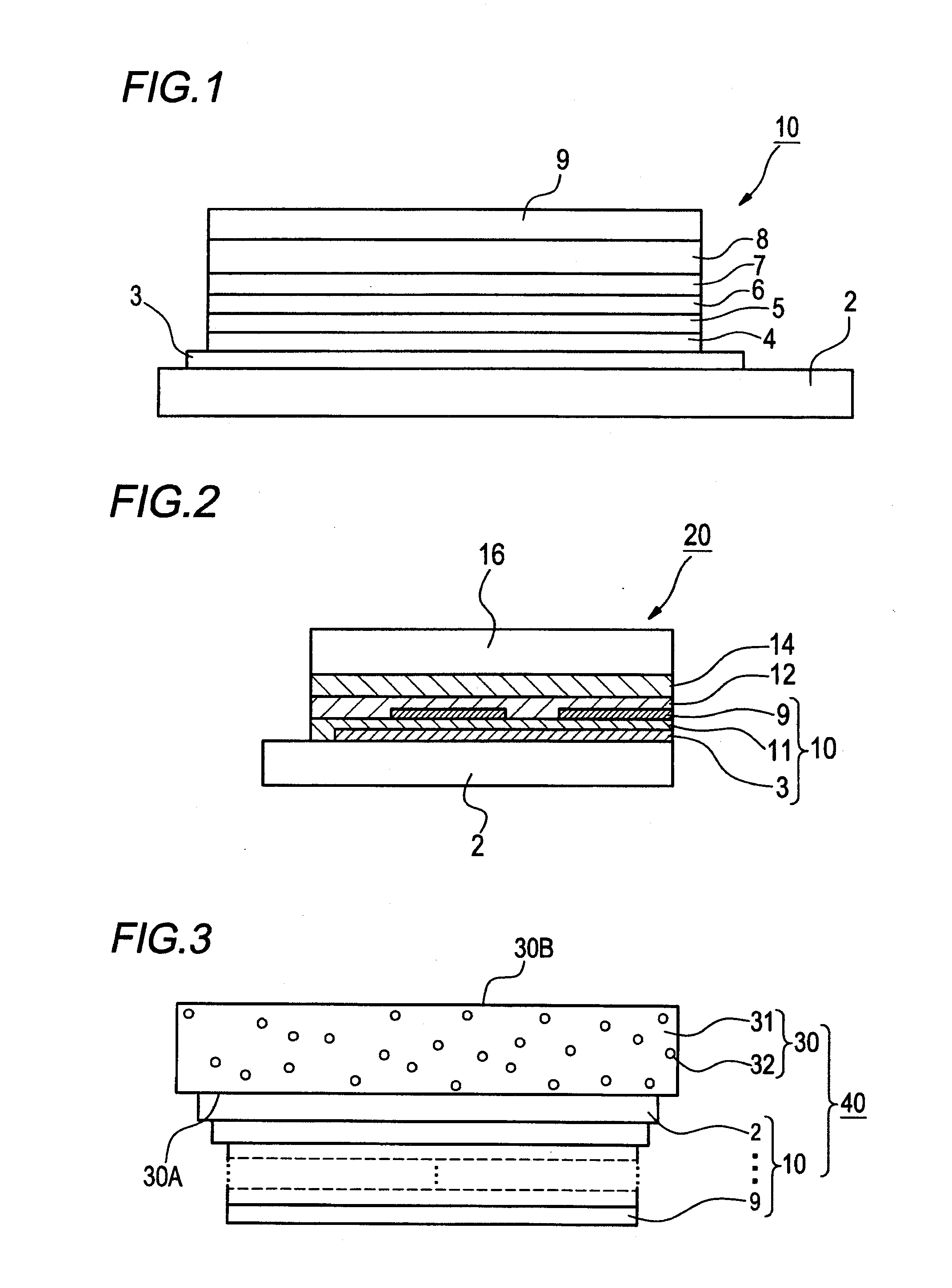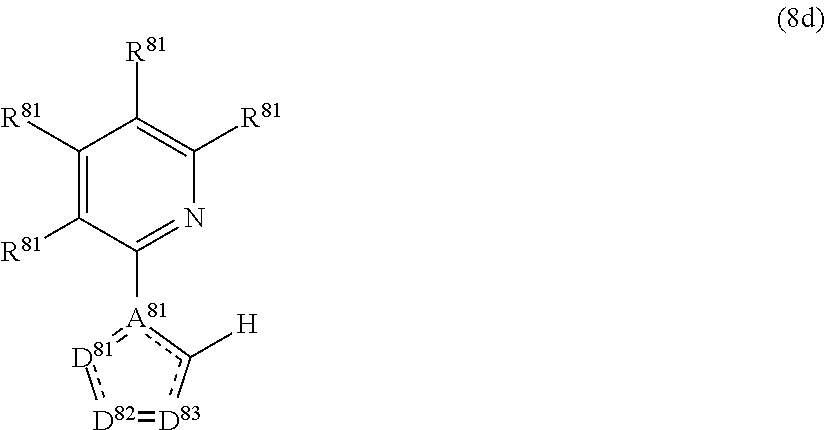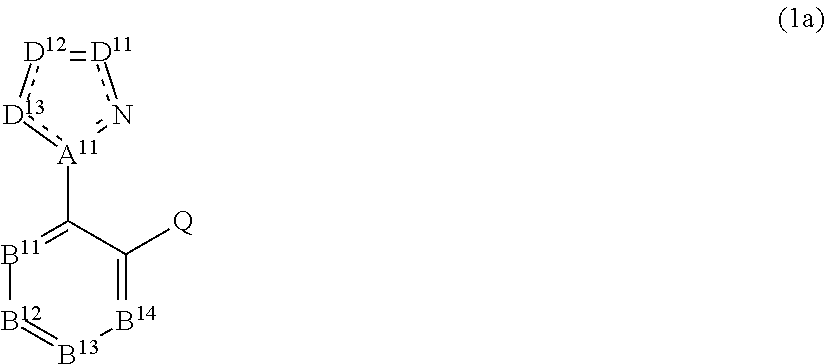Method of forming metal complex compound, and organic electroluminescence device
a technology of metal complex compound and organic electroluminescence device, which is applied in the direction of discharge tube luminescnet screen, platinum organic compound, organic chemistry, etc., can solve the problems of low yield, deterioration of device durability, and inability to develop devices having high efficiency and high durability compatibility, so as to achieve excellent durability, reduce the content of decomposed material in light emitting materials, and enhance yield
- Summary
- Abstract
- Description
- Claims
- Application Information
AI Technical Summary
Benefits of technology
Problems solved by technology
Method used
Image
Examples
synthesis examples
(Synthesis of Exemplified Compound 1)
[0374]Exemplified Compound 1 was synthesized in accordance with the following reaction scheme (Synthesis Method 12).
[0375]At a temperature of −78° C. under an atmosphere of nitrogen, a pentane solution of n-BuLi (2.6 ml, 4.2 mmol) was added dropwise to 10 ml of a dehydrated THF solution of the compound 1a (744 mg, 4 mmol), and stirred for 30 minutes. Thereto, a diethyl ether solution of anhydrous zinc(II) chloride (4 ml, 4 mmol) was further added dropwise, and stirring was continued until the temperature of the reaction solution was restored to room temperature.
[0376]To the reaction solution containing the zinc complex, the bromine-bridged complex 2a (2.57 g, 2 mmol) and 20 ml of dehydrated dichloromethane were added. And the resulting mixture was refluxed for 1 hour at its boiling temperature. The thus obtained reaction mixture was allowed to stand for cooling, and then subjected successively to extraction with dichloromethane, washing with wate...
example 1-1
[0495]An indium tin oxide (ITO) film-coated glass substrate having an area of 2.5 square centimeters and a thickness of 0.5 mm (made by GEOMATEC Corporation, surface resistivity: 10 Ω / sq) was placed in a cleaning vessel and subjected to ultrasonic cleaning in 2-propanol, and the thus cleaned substrate is further subjected to UV-ozone treatment of 30 minutes. Onto this transparent anode (ITO film), the following organic layers (organic compound layers) were evaporated in sequence by using a vacuum evaporation method.
[0496]The evaporation speed in each of Examples relating to the invention was 0.2 nm / sec unless otherwise specified. Evaporation speed measurements were made with a quartz resonator. And the following film thicknesses were also measured with a quartz resonator.
[0497]The ITO substrate cleaned in the foregoing manner was placed in a vacuum evaporator, and copper phthalocyanine was evaporated onto this substrate in the form of a 10 nm-thick film (first layer). Onto the first...
examples 1-2 and 1-3
, and Comparative Example 1-1
[0498]Devices of Examples 1-2 and 1-3 and a device of Comparative Example 1-1 were made in the same manner as the device of Example 1-1, except that the method used for preparing Exemplified Compound 63 in Example 1-1 was changed to the methods entered in Table 1, respectively. A direct-current constant voltage was applied to these devices, respectively, through the use of Source Measure Unit 2400 made by TOYO Corporation, and thereby the devices produced luminescence in colors originating in the light emitting materials incorporated, respectively.
[0499]Each of the organic EL devices made in Examples 1-1 to 1-3 and Comparative Example 1-1, respectively, was mounted in an emission spectrum measuring system made by Shimadzu Corporation (ELS-1500), and thereon measurement of an impressed voltage at which the emission spectral intensity of each device reached 1,000 cd / m2 was made.
[0500]Each of the organic EL devices made in Examples 1-1 to 1-3 and Comparativ...
PUM
 Login to View More
Login to View More Abstract
Description
Claims
Application Information
 Login to View More
Login to View More - R&D
- Intellectual Property
- Life Sciences
- Materials
- Tech Scout
- Unparalleled Data Quality
- Higher Quality Content
- 60% Fewer Hallucinations
Browse by: Latest US Patents, China's latest patents, Technical Efficacy Thesaurus, Application Domain, Technology Topic, Popular Technical Reports.
© 2025 PatSnap. All rights reserved.Legal|Privacy policy|Modern Slavery Act Transparency Statement|Sitemap|About US| Contact US: help@patsnap.com



